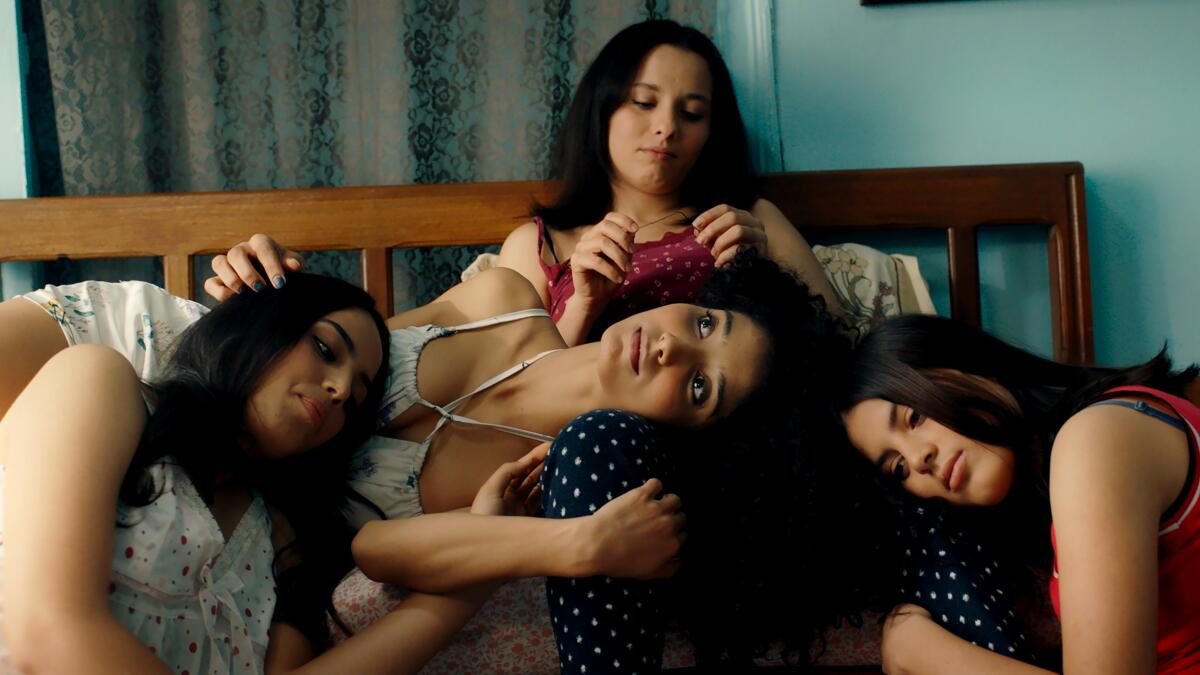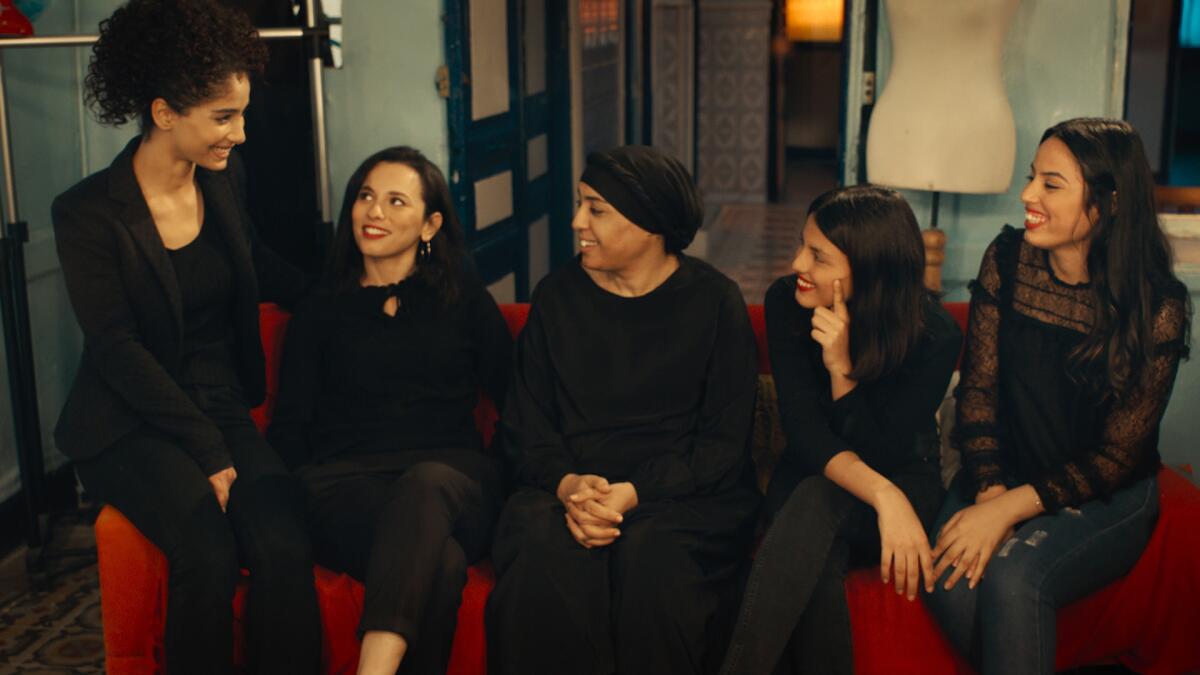In ‘Four Daughters,’ a shattered Tunisian family braves obstacles in the eye of the camera

- Share via
What memory serves is often open to debate in “Four Daughters,” a meta-documentary from Tunisia that explores the lives of a shattered family whose two eldest teenage daughters ran away in 2015 to join the Islamic State in Libya. The film, directed by Kaouther Ben Hania, features both its real-life participants — Olfa Hamrouni and her remaining two daughters, Eya and Tayssir Chikhaoui — as well as professional actors, stand-ins for the missing Ghofrane and Rahma, as well as a double for Olfa (played by Tunisian and Egyptian movie star Hend Sabry) and a single male actor to portray the abusive men in her life.
The Kino Lorber release, an Academy Award nominee for documentary, didn’t originate as an emotional hall of mirrors. Ben Hania took a more conventional approach in 2016, when she first made contact with Hamrouni, who appeared widely on news broadcasts in angry protest against her daughters’ radicalization and disappearance. The filmmaker was intent on conveying a deeper perspective than the superficial coverage she saw. But she struggled with form.
“Quickly, I felt that it would not show the molecular layered aspect of the complex story,” Ben Hania said. “I was lost in the road. I wasn’t happy with what I filmed.” She moved onto a different project, the fictional drama “The Man Who Sold His Skin,” a 2021 Academy Award nominee for international feature film. The recognition brought new opportunities, but Ben Hania went back to work on “Four Daughters,” a prospect made more complicated by the pandemic.
A mother and her two youngest daughters recount the tragedy that tore their family apart in this emotionally stirring movie from Kaouther Ben Hania.
This time, she took a conceptual risk, creating the film from a series of reenactments from pivotal, often harrowing moments in the lives of the mother and her girls.
“I don’t like reenactment, because for me, it’s such a huge cliché,” Ben Hania said. “But at the same time, I’m not afraid of cliché. I love to hijack cliché. Maybe I can use this to summon this past, but also with the help of the actors I can question this past. We can all, like in Brechtian theater, be in the scene [and] at the same time outside of the scene, and do a very introspective journey.”
The director organized the shoot as a series of scenes that become an ongoing commentary on family, trauma, the conflicted roles these women play in their traditional society and the volatile relationship between mother and daughters.
“We shot a memory per day, with the real character to tell the story of their particular memory and then to reenact it with the actors,” the filmmaker explained. Sometimes we start with one memory and we end up with another one. I never knew where this process would lead since it’s a documentary. I was the first audience for my own movie, which is great.”
Ben Hania was fortunate to have such charismatic women in front of her camera. “They have an innate talent for storytelling, even in very difficult moments, infusing them with humor,” said producer Nadim Cheikhrouha. “Furthermore, they had undergone therapy and were prepared for the process. Kaouther, who maintained regular contact with them, had also established a relationship of trust.”

The filmmaker created a set in an old hotel in the Medina of Tunis. “It was called the Eiffel Tower, [as] it was built at the same time as the Eiffel Tower in Paris,” she said. The vibrant blue walls, which dominate the film’s visual palette, suggested to Ben Hania the interior of middle class and lower income housing in Tunisia. For this project, the director reduced her film crew to a minimum. “I tried to have a lot of women in the crew,” she said. “We wrote together a kind of contract to avoid all the toxic behavior we can have on a set, to create a safe space. It was really a very empathetic shoot.”
That helped to foster on-set bonds between real and surrogate family members.
“Quickly, the actresses, especially the two playing the oldest daughters, became part of Olfa’s family, and there was a kind of magic sisterhood between the girls,” the filmmaker said. “That exceeded my expectations.”
Ben Hania, who cites the late Iranian master Abbas Kiarostami and his 1990 meta-fictional film “Close-Up” as a formative spark to her career, also found a way to more strongly convey the emotional tone of the on-screen conversations. “For the interviews, I wanted them to look directly to the camera not, as it’s always the case in documentary, to the person next to the camera,” she said. “I want the audience to look into their eyes. I wanted to share their humor, the resilience, all those things that they felt during all those years.”
More to Read
From the Oscars to the Emmys.
Get the Envelope newsletter for exclusive awards season coverage, behind-the-scenes stories from the Envelope podcast and columnist Glenn Whipp’s must-read analysis.
You may occasionally receive promotional content from the Los Angeles Times.











